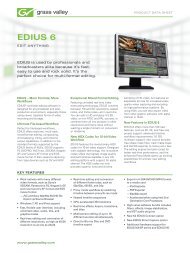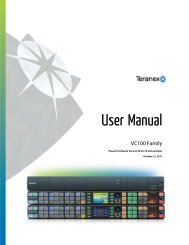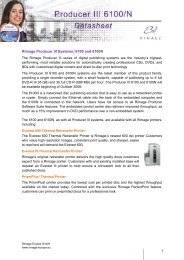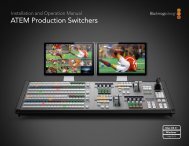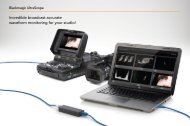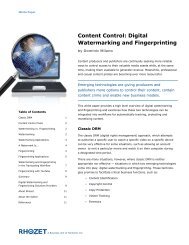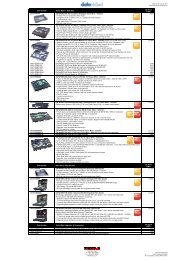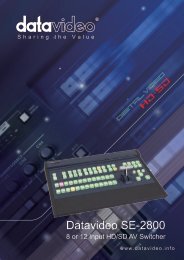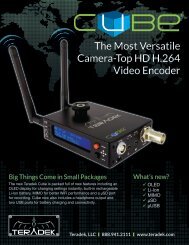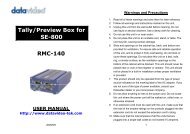Manual - Holdan.eu
Manual - Holdan.eu
Manual - Holdan.eu
You also want an ePaper? Increase the reach of your titles
YUMPU automatically turns print PDFs into web optimized ePapers that Google loves.
3.0 CAPABILITY, TERMS OF REFERENCE AND OVERVIEW SUMMARY<br />
3.1 Device Capabilities<br />
The C2-7000 series of Dual Channel Video Processors uses the proprietary<br />
CORIO®2 Engine to control its capabilities. The CORIO®2 series units are<br />
the second generation of the successful CORIO® products. The CORIO®2<br />
features are powerful tools for any application requiring high quality video<br />
signal conversion or image manipulation.<br />
Front and rear of the C2-7110<br />
Each C2-7000 series unit features two independent video processing and<br />
scaling engines (CORIO®2) and two video mixers for maximum flexibility in<br />
handling DVI, RGBHV, RGBS, RGsB, YUV, YPbPr, CV and YC (S-Video)<br />
signals. In addition, the C2-7200 range also supports SDI and HD-SDI.<br />
Throughout this manual, any feature or function relating present on all C2-<br />
7000 units will be referred to by ‘C2-7000 series’. Any unit-specific functions<br />
or features will be mentioned by specific product name.<br />
At home in both broadcast and display environments the C2-7000 series is<br />
multiple products in one unit. The unit has three basic operating modes to<br />
simplify control.<br />
Switcher Mode - Equally powerful Program and Preview channels allow any<br />
function (next Image, PIP, keying, logo, etc) to be set up and previewed,<br />
totally independent of the Program output. Transition from Preview to<br />
Program is by Cut, Dissolve or Special Effect when the user performs a Take.<br />
Independent Mode - Provides all the power of two completely independent<br />
video processors in one box, each with a full range of features including PIP,<br />
keying, etc. Each output can deliver different formats and resolutions<br />
simultaneously to the other. For example, a presentation being fed to a highresolution<br />
display on Output 1 via DVI can be fed to a VCR for recording on<br />
Output 2 via Composite Video.<br />
Dual PIP Mode - Any video input can be squeezed and placed into either of<br />
two windows of any size and positioned anywhere on the screen, even<br />
overlapping each other with user defined layer priority control. The windows<br />
can be placed over any other video input as the background. The images in<br />
the windows can then be seamlessly switched or zoomed. Keying can be<br />
applied to each window independently.




